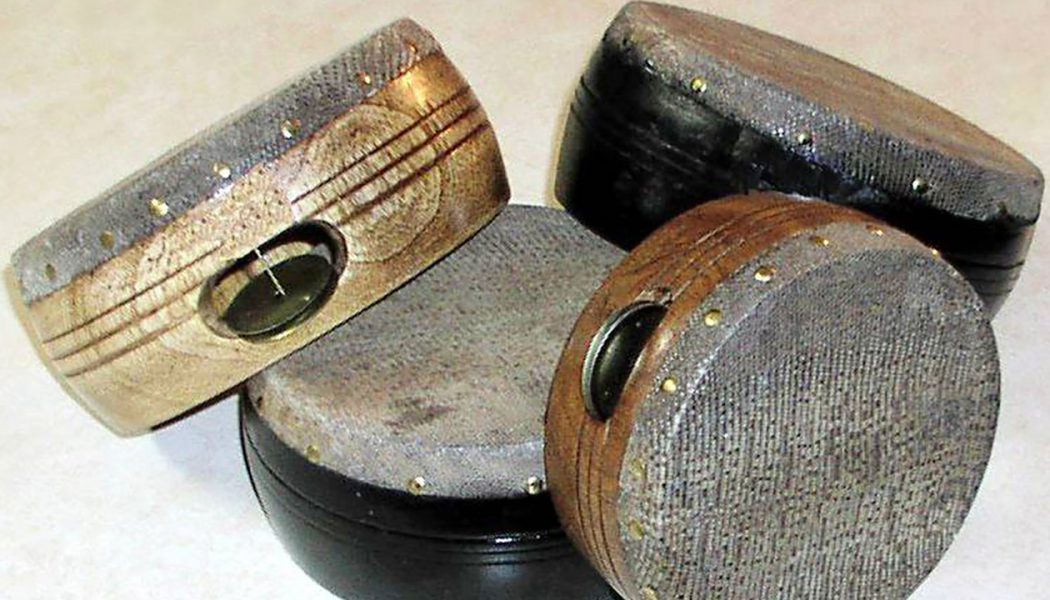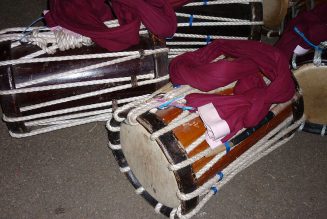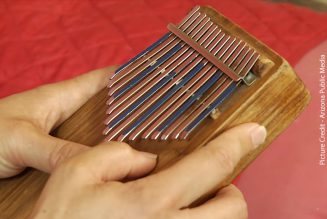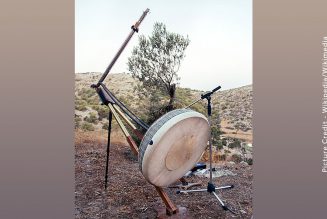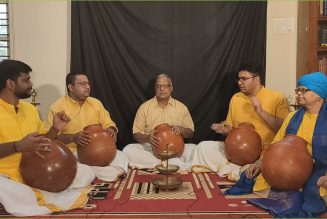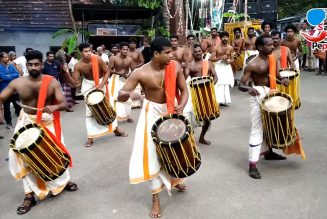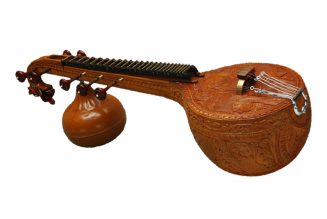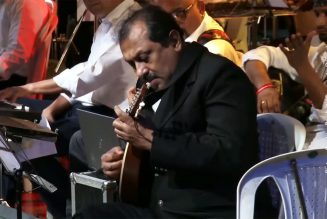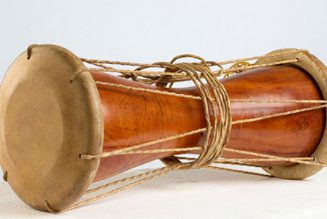Kanjira or Ganjira is a hand percussion instrument which belongs to the family of Drumhead instruments – Tambourines. A Drumhead or Drum Skin is a membrane stretched over one or both ends of a wooden or metallic drum.
Kanjira or Ganjira is the South Indian Frame Drum mainly used as a supporting instrument for Mridangam in Carnatic Music concerts. The wooden frame, about 7 to 9 inches diameter, is made of Jack Fruit tree and Monitor Lizard skin is stretched over on one side. The depth is about 2 to 4 inches. It is also known as Dafli in North India. Kanjira is used normally as a folk Bhajan instrument over centuries in India. It has one pair of Jingles fitted on to the frame.
Tambourine consists of a wood, plastic or metal frame with pairs of metal Jingles and a leather stretched and fixed on to the open end of the frame. It is circular in shape and normally played by hand though it can be played with drum sticks when it is mounted on a stand.
Tambourines are used in various kinds of music like Classical Music, Pop Music, Rock Music, Country Music, Turkish, Italian and Greek Folk Music etc. They are often used in the Indian Carnatic Music Performances as well.
How is it played
Kanjira can be held in one hand and striking the leather head with the palm of the other. It is relatively difficult to play especially in Carnatic Music owing to the complexity of percussion patterns.
Tambourine can also be used as a part of Drum Kit, mounting it on a stand and playing with the Drum Sticks. Some types of Tambourine do not have the leather membrane but only Jingles fitted on to the frame. They are known as headless Tambourine.
Daf is a large sized Tambourine which normally accompany classical music in Iran, Azerbaijan, Turkey, Uzbekistan and Arab World. They are known in different names though.
